Exploring the Benefits of Multi-Gen Living

While only about 5% of households in Canada are multigenerational, a striking 18% of the U.S. population lives in a home shared by multiple generations of family members.
This shift isn’t just about living arrangements; it’s about creating a supportive, enriching environment that benefits everyone involved.
Whether you’re seriously considering this arrangement or simply curious about its potential, we’ll explore the many benefits of multi-gen living. From financial savings and shared responsibilities to stronger family bonds and improved well-being, we cover it all!
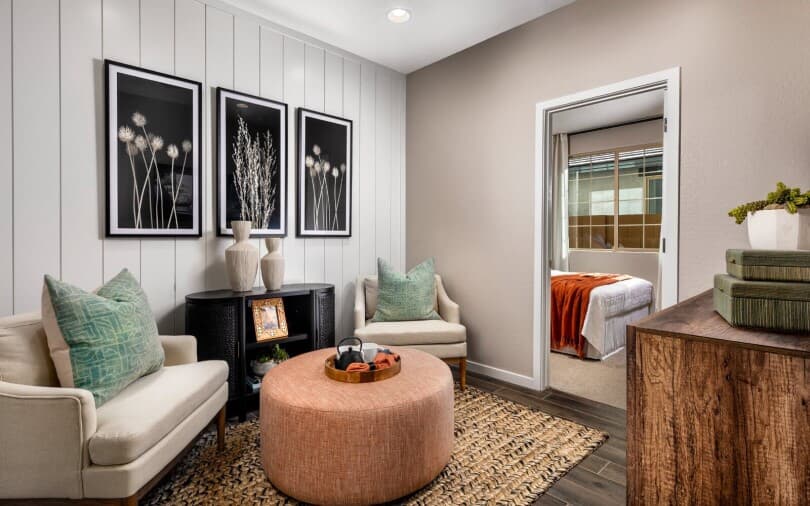
Ponderosa Floor Plan, Highland Ridge Collection, Alamar Community, Avondale, Arizona
1. Enhanced family connection
Multi-gen living creates a unique environment where family members of different ages can connect on multiple levels. Seniors in the household bring a wealth of experience and perspective to everyday conversations, offering wisdom and guidance to younger generations. Younger generations bring energy and enthusiasm that invigorate the household, introducing new ideas and a fresh outlook.
This close-knit living arrangement also fosters emotional bonds that might not develop as deeply in separate households. Daily interactions, whether over meals, shared activities, or simply being present, deepen these connections.
It allows family members to celebrate successes together and provide comfort during difficult times, reinforcing the family's resilience. Through these continuous and meaningful engagements, multigenerational living cultivates a richer, more cohesive family dynamic that benefits everyone involved.
2. Ability to care for other family members
Having everyone under one roof gives families the unique ability to care for their members, from young children to aging parents or grandparents. There is help on hand for day-to-day needs, and the family can react quickly if there is ever an emergency.
Childcare is a significant expense for many households, and finding trustworthy caregivers can be a daunting task. In a multigenerational household, grandparents can provide reliable, loving care for their grandchildren, reducing the financial burden and offering parents peace of mind.
Meanwhile, adult children can support their aging parents, assisting with daily activities and ensuring they receive proper care. This reciprocal caregiving dynamic fosters a deep sense of connection and mutual reliance, ensuring no one feels overwhelmed or isolated in times of need.
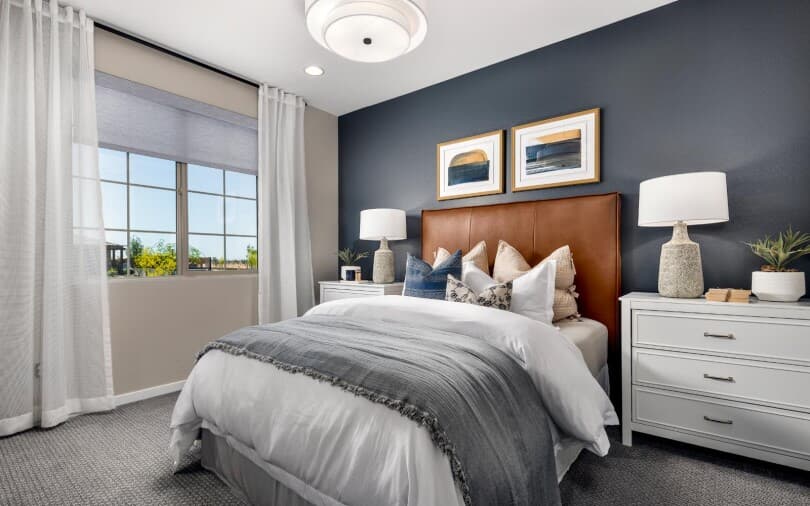
Solstice Floor Plan, Mariposa Collection, Blossom Rock Community, Apache Junction, Arizona
3. Financial help
Sharing mortgage payments, utility bills, groceries, maintenance costs, and other expenses makes homeownership more affordable and reduces individual financial burden. This collective approach also frees up money for education, travel, investments, or general savings.
For seniors on a fixed income, multi-gen living provides a practical solution to help navigate the rising price of homeownership and everyday essentials while avoiding the high costs associated with assisted living facilities or nursing homes.
Instead of facing financial strain alone, seniors can contribute their resources towards shared household expenses while also receiving care and support from loved ones, ensuring both financial and emotional well-being in their later years.
4. Shared responsibilities
One of the most significant advantages of multigenerational living is the division of labor within the household. With more individuals in the home, there are more helping hands to pitch in and get things done. This collaborative approach lightens individual workloads and ensures no one bears the full burden of running a household or caring for family members.
Tasks such as cooking, household chores, childcare, eldercare, and even financial management can be distributed among family members or to whoever has an affinity or talent in those areas.
5. Emotional support and companionship
Having family members of varying ages living together under one roof means that built-in companionship will naturally occur, which plays a crucial role in mental and physical well-being across all generations.
The constant presence of others and daily interactions with people who care for you can mitigate feelings of loneliness and isolation, especially in older adults who may be at higher risk of experiencing these emotions. Regular social interaction can help ward off feelings of depression and anxiety, boost cognitive function, reduce fears of aging, and enhance overall happiness.
Multi-gen living creates an environment where emotional support flows naturally between generations. Whether celebrating achievements, offering advice during challenging times, or simply sharing everyday moments, the presence of family members ensures that no one feels alone in their experiences. This constant network of emotional support strengthens familial bonds and contributes to a sense of belonging and well-being that benefits everyone in the household.
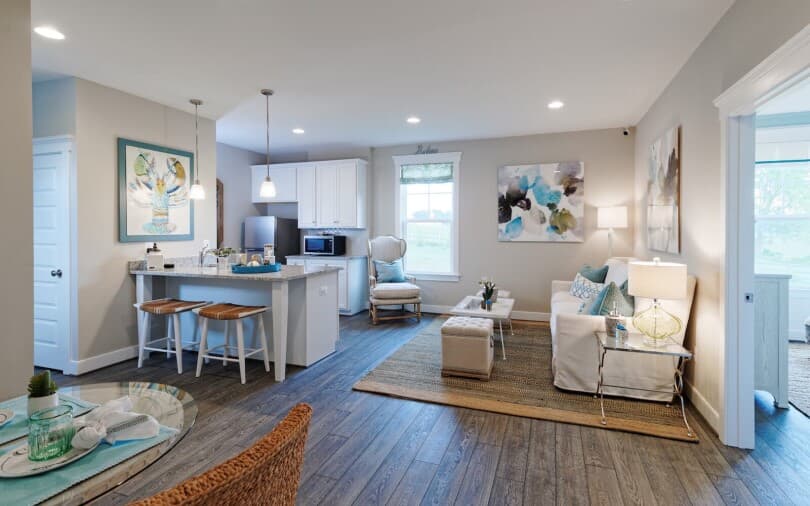
Types of Multi-Gen Households
1. Three-Generation Households
This is the most traditional form of multigenerational living, where grandparents, parents, and children live under one roof. It offers a balanced blend of support, as grandparents can help with childcare, and adult children can assist their aging parents. This setup fosters strong family bonds and ensures that the youngest and oldest family members are well cared for.
2. Grandfamilies or Skipped-Generation Households
There are also growing numbers of grandfamilies, or households where grandparents live with their grandchildren without the presence of the children's parents. This often occurs due to parents being unable to care for their children due to work, health issues, or other challenges. Grandparents step into the primary caregiver role, providing stability and continuity for their grandchildren.
3. Two-Generation Adult Households
These households consist of parents living with their adult children. Often, adult children may return home due to financial reasons, job transitions, or after completing their education. This setup allows adult children to save money and receive emotional support while contributing to the household through work and shared responsibilities.
4. Extended Family Households
Beyond the nuclear family, extended family households include aunts, uncles, cousins, and other relatives living together. This type of household can create a vibrant, supportive community where family members share resources, responsibilities, and experiences. It enriches family life with diverse relationships and a strong sense of community.
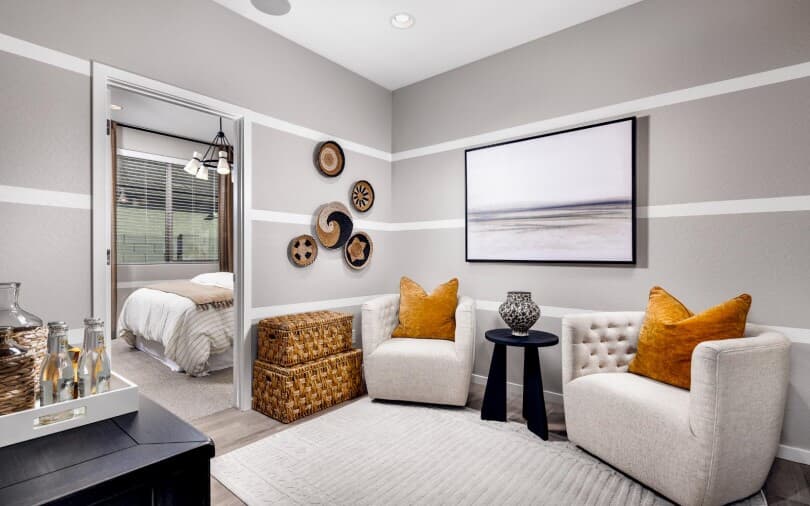
Ponderosa Floor Plan, Laurel Collection, Blossom Rock Community, Apache Junction, Arizona
Finding the Right Multigenerational Home
House hunting looks a little different when you’re searching for a multigenerational home. You still need to consider the basics, like the neighborhood, bed and bath count, and home size, but you have to weigh other priorities to make your living arrangement successful.
1. Sufficient Square Footage
Consider the number of people living together in the home and their needs. Do you need space for an additional kitchen, or will you all share one? How many bedrooms do you need to ensure everyone is comfortable? How many bathrooms do you need to maintain privacy?
Figuring out the minimum requirements for your household to function comfortably can help you determine the amount of square footage you need in your home. The more bedrooms and baths you need, the larger the square footage you should search for.
2. Separate Living Spaces
Look for floor plans that offer separate living spaces or the potential to create them, such as a flex room, loft, or finished basement. Having a distinct area where each generation can retreat allows everyone to enjoy their own routines and downtime while still providing opportunities for shared family time. It’s about finding the right balance of togetherness and independence to ensure everyone feels comfortable and happy.
3. Accessibility Features
If you have elderly family members or want to plan for any future mobility issues, prioritize homes with accessible features, like wide doorways, walk-in showers, minimal stairs, or a main-level bedroom.
You should also consider proximity to services that are a priority for individual family members, such as public transportation, a nearby park or playground for the kids, a hospital, or healthcare facilities.
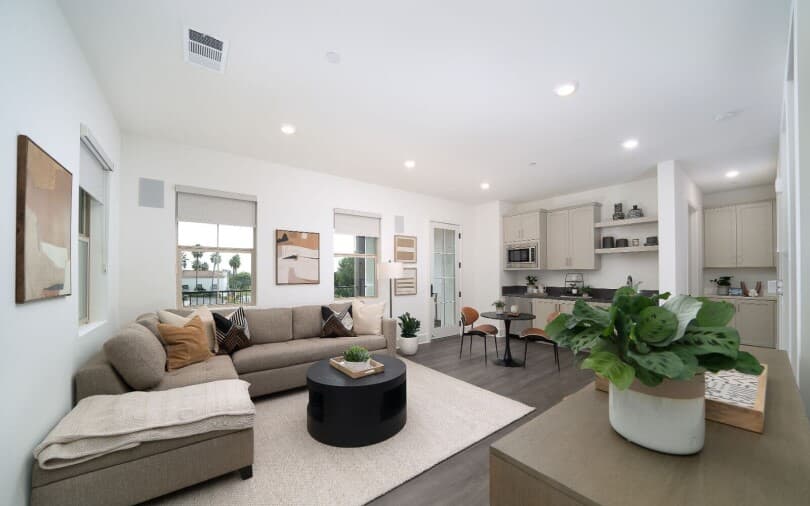
Residence 6, Villas Collection, Los Coyotes Country Club Community, Buena Park, California
A multi-gen home is often considered a forever home, and these types of households don’t move as frequently as a traditional family does. While you want to find a floor plan that works for you today, you also need to consider what you might need in 5–10 years and even 20+ years.
Multigenerational Living by Brookfield Residential
Finding the perfect home on the market to meet all of your needs may sound nearly impossible, but choosing a new build specifically designed for multigenerational living ensures you have the features you’re looking for the day you move in.
Some of our neighborhoods offer floor plans with optional built-in multigenerational suites that feature an additional kitchen and living room area, creating an independent space while remaining close to the family. Other communities offer floor plans that provide first-floor bedrooms with private ensuites perfectly suited for multi-gen living.
You’ll also find floor plans with basement suites that offer a private, self-contained space with their own bathrooms and a full kitchen. It’s like having a home with a home, giving everyone their independence while keeping the family under one roof. A basement suite is perfect for families who want to enjoy time together without sacrificing personal space and comfort.
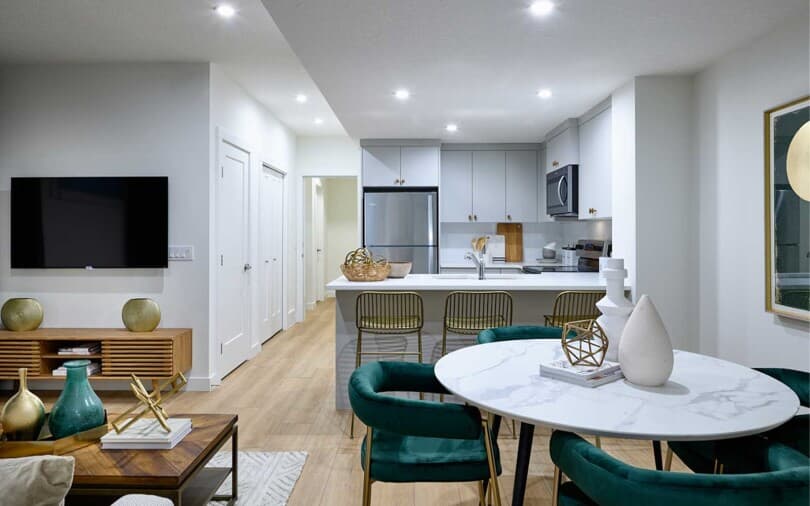
Oxford Floor Plan, Laned Collection, Livingston Community, Calgary, Alberta
When you’re ready to learn more about multigenerational floor plans that will work for your family, contact us to explore Brookfield Residential communities throughout North America. One of our experienced sales representatives can help you find a new home you’ll love. We’ll be expecting you!
